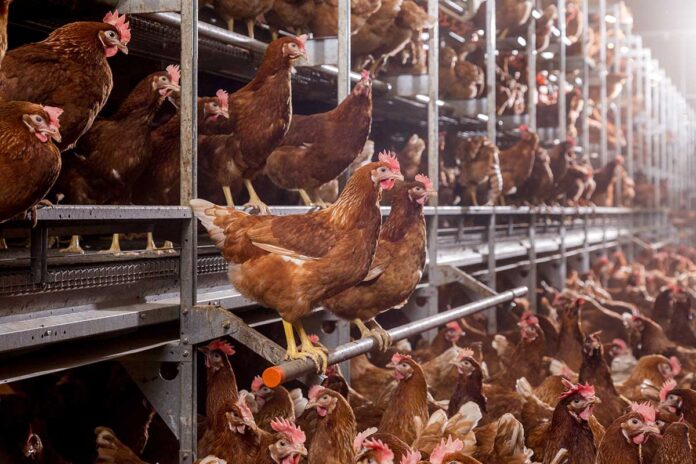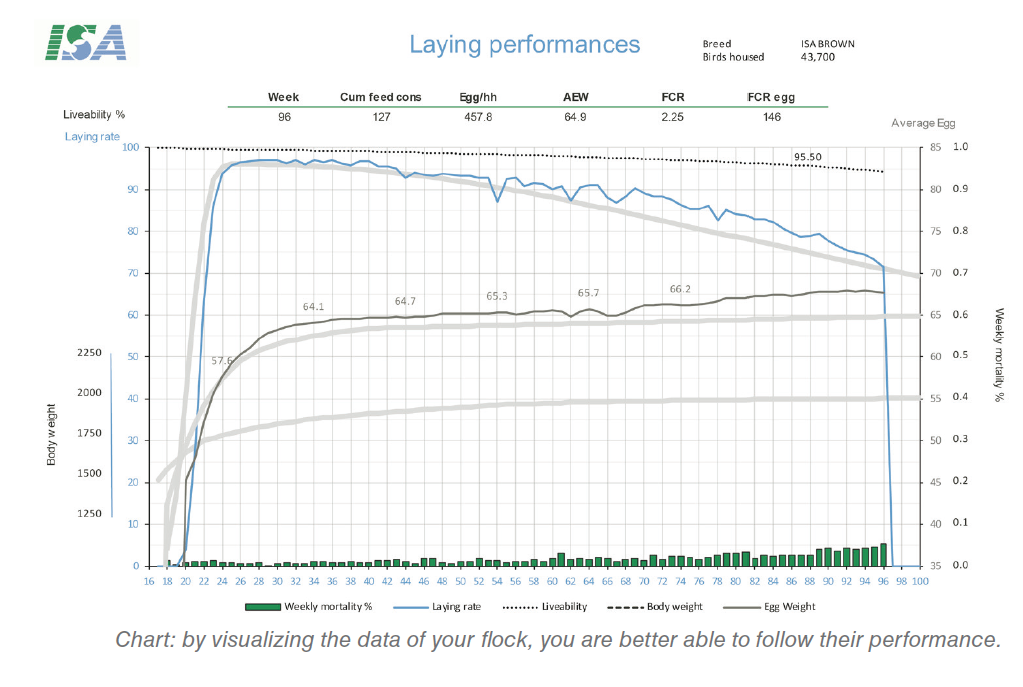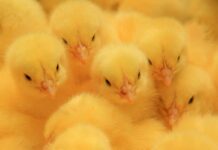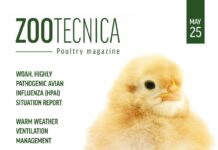
Genetic improvements are seen across a wide array of traits that Hendrix Genetics’ geneticists select on, from egg production, egg quality to bird behavior.
Balanced breeding
Hendrix Genetics’ breeding philosophy is well-known: breeding the long-life layer. The company is selecting and breeding laying hens that can be kept for longer egg production periods with every new generation delivered to the market. Selection is based on many traits, which all need to go in the desired direction. Birds can only be successfully kept longer when they can keep up their productivity, maintain a good health and body condition, and produce eggs that can still be classified as 1st quality. An ever-increasing number of flocks of white egg layers (e.g. the white leghorns) have proven themselves to produce over 500 eggs per hen housed in a time span of 100 weeks. But steady progress is also seen in the brown egg layers, a clear trend is seen that also with brown laying hens, flocks are kept longer and longer. For a brown egg layer, it is a bigger challenge to keep them longer compared to a white egg layer. One should not forget that they are centuries apart from each other. The birds do not only look different, but they are different from each other in their genetic architecture, resulting in a different response to selection. Brown egg layers do have their clear benefits, one of these is the higher egg size compared to the white leghorns. Resulting in a comparable or higher egg mass output despite fewer eggs being produced.
Achieving the birds’ genetic potential
Breed choice, production houses, equipment, management, feed supplier and flock health, all have significant impact on the performance of your flock. Managing a flock of laying hens is nowadays a highly specialized business requiring significant investment to stay up to date with the latest regulations on animal health and welfare. Laying hen breeding is even more specialized as more and more traits are added to the breeding programs, to ensure that Hendrix Genetics laying hens perform in a wide variety of egg production systems: from enriched colony group cages, all the way up to barn and organic. Exploitation of the genetic potential requires constant research in nutrition and management systems to ensure that the limiting thresholds have not yet been reached. Results differ between, pullet rearers, housing systems, feed companies and many more. By joining forces in applied research with partners from the global egg industry the company tries to optimize their management recommendations and advises to customers.

Gaining insight in the birds’ genetic potential
In order to understand your birds better, you must look at the data the birds are providing to you. Even though we do not speak the same language, your laying hens are able to tell you a lot daily! By having a closer look to the daily figures, you can catch the early alerts and the early warning that your flock is giving to you. Sudden drops in water and feed intake are among the early warnings that indicate that your flock is getting into trouble. By directly anticipating on these and starting an investigation what the possible reason(s) for the drop can be, you are ahead compared to a situation when it is too late, e.g. when you are recording sudden increases in mortalities. A data collection tool will help you to store and analyze the data of your flock, besides it will be easier for the veterinarian, feed supplier and distributor of your birds to assist you with the right support to tackle the challenge. Data insight allows you to identify these opportunities in which you can even further improve the performance of your flocks, you can more accurate compare and benchmark your current flocks with your previous ones, and it can help you with making management decisions based on performance instead of emotions. Data insight will tell you how much of the genetic potential is exploited (comparing to the breeds standard) and the additional value that you can gain by adapting the management. It will also help you to compare your results to those of your colleague farmers in the industry, and to learn from each other by sharing best practices.

Proven product performance
By sharing your data with the distributor of the birds, breeding companies are better able to define, and if needed to adjust, their breeding goals based on the actual product performance in the field combined with the industry needs. Next to that they can adjust their technical support to be as relevant as possible to help you achieving the full genetic potential out of your flock of laying hens. Only proven product performance will give you trust in the breed used, the feed supplied, and the management applied. Product and management interventions that have proven to be successful on your farm, will lead to maximize the value generated out of your farm. Generating and understanding this value and the steps that are available to you which you can take in order to maximize this value is crucial for your business and allows you to continue to invest in sustainable egg production.
In conclusion, a thorough understanding of your flock, and the daily data they generate, is the key to assess the genetic potential of your flock, and the additional value which could be gained by management decisions. Sharing your results with your distributor and breeding company will help them in fine tuning the breeding goals and further increase the genetic response to selection, besides it will help to provide you with the right technical service. Taken this all together will help to optimize the value that you can generate out of your flock.

















